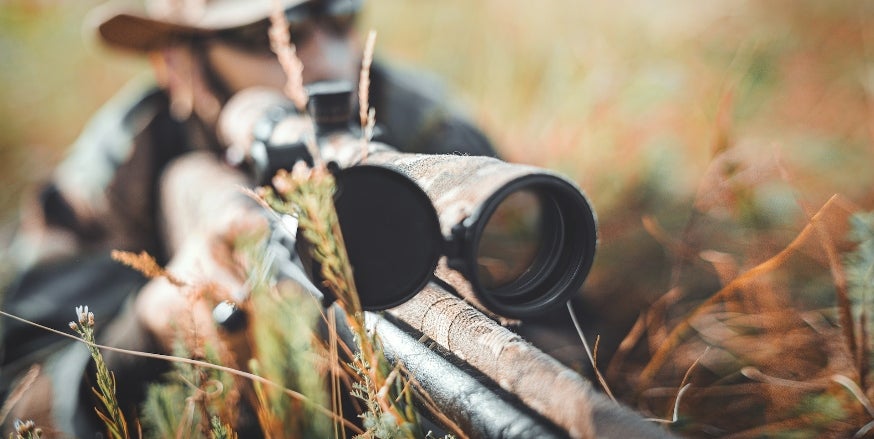Land Conservation: How to Clear Land for an Improved Food Plot
Martin Banks 01.30.24

Deer hunting is a more manageable feat when they’re drawn to your property. These creatures love eating vegetation like leaves, weeds, mushrooms, and other delicacies. How can you ensure they show up on your land? You must clear it and develop a food plot to make hunting easier. Here’s how to ensure you’re ready for deer season by properly managing your land, the animals that will inhabit it, and simultaneously being a good steward to the outdoors.
Land Conservation & Food Plot Coverage on AllOutdoor
- Silencer Central, OSCF, SD GFP Collab to Support Wildlife Conservation
- RMEF Achieves Conservation Milestone in Appalachian Elk Country
- New Conservation Campaign to Protect Alaska’s Brooks Range
- Outdoor Stewards of Conservation Foundation: The AR-15 for Hunting?
1. Food Plot – Cultivate a Clearing Schedule
Before clearing land, you must cultivate a schedule to have your future crops ready just in time for deer season. Timing is essential because you’ll want your plots ready when the hunting window starts. Early crop growing will lead to deer eating the vegetation before the season begins, whereas late blooming may mean you miss your chance to hunt.
The best time for planting depends on your local climate, the crops you plan to grow and when hunting season starts. Suppose you’re a deer hunter in north Texas, where deer hunting begins in early November for firearms. Crop planning should begin in late August or early September, as you’ll need about two months to ensure you have enough time for growing. Push the timeline up if deer hunting season starts in October or September, as in some states.
2. Food Plot – Gather Your Equipment
Clearing land can be time-consuming if you don’t have the proper equipment, so ensure you have high-quality tools for getting the job done. Larger plots may need larger machines, such as bulldozers or forestry mulchers, to save you from the back-breaking work. An excavator could upgrade your plots by leveling land and removing stumps after cutting down large trees.
Smaller plots could still use gas-powered devices, such as skid steer loaders or tractors, to remove debris. If you’re on a budget, you can take control of the work with manual tillers, shovels, rakes and other handheld tools. Clearing land may take a few weeks, but it’s essential. Your plants require ample sunlight and healthy soil for growing, and you’ll need enhanced visibility for deer watching. Start clearing in the spring to give yourself enough time.
3. Food Plot – Evaluate the Soil
Clear land means it’s time to evaluate the soil and improve its condition. You’ll need to gauge the soil’s pH and nutrient levels before planting to ensure it’s healthy enough to grow. Most crops thrive in a pH level between 6 and 7, although some do better in more acidic soil. The soil will determine what plants you can grow in the food plots, but you can alter the pH level to get your desired result. Planters can increase the pH level by adding lime or limestone, whereas sulfur and aluminum sulfate are two materials that decrease it.
4. Food Plot – Choose the Plants
Deer are herbivores and relatively easy to choose plants for because they’ll eat nearly anything. Pick low-maintenance crops that are suitable for your particular climate and sunshine availability. For example, suppose you start planting in mid-to-late August, just before the cooler weather in September arrives. Turnips, Brussels sprouts and corn are apt for deer food plots because they don’t take long to mature. Deer hunters often choose turnips because they only need about six weeks to grow, depending on your crop maintenance.
5. Food Plot – Maintain the Plots
You must maintain the plots once the crops start growing for the best hunting results. Vegetation management benefits hunters by providing clear shooting lanes, maintaining hunting trails and maximizing animal traffic on your property. Here are a few things to be mindful of when maintaining your plots:
- Fertilizer: Growing plants in native soil is complex, so you may need fertilizer to supplement the crops. Plants in sandy soil will likely need treatment while growing to ensure they get enough nutrients.
- Weeds: While deer eat weeds, removing these pesky plants benefits your food plots. Weeds steal nutrients from your crops and can be why they don’t grow properly. Additionally, they can foster an environment for unwanted pests.
- Pests: The last thing you want to see when growing food plots is pests. Bugs like weevils and rootworms will destroy your leaves and roots, making your crops less useful. Consider introducing ladybugs, dung beetles and other beneficial insects.
Growing Food Plots for Deer Season
Deer hunting season is something people look forward to annually, as it’s an opportunity to support local economies, bring venison home, and bond with family and friends. Before fall arrives, cultivate your food plot and attract deer to your property. Start clearing land as early as springtime to prepare for action in the fall.
